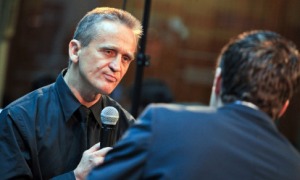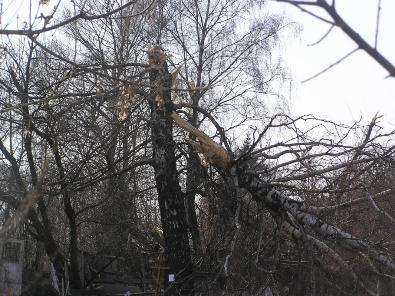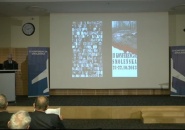Recommended:
- The Smolensk Conferences. A Preliminary Summary and Conclusion
- NEW STUDY: Putin's Russian inquiry into the Polish Air Force One crash in Smolensk
- 15 SIMPLE FACTS THE WORLD SHOULD KNOW
- Smolensk Reader's Digest. 23 pages, all the facts.
- Polish Military Intelligence was warned of a possible terrorist threat against one of the EU Member States' aircraft.
- Story behind the "1:24"
Between 21 -22 October 2013, Warsaw hosted a two day conference on the Smolensk plan crash, with the participation of academics, scientists, experts and relatives of vicitms.
Between 21 -22 October 2013, Warsaw hosted a two day conference on the Smolensk plan crash, with the participation of academics, scientists, experts and relatives of the Smolensk plane crash.
The first Smolensk conference of this type was held on October 22, 2012 in Warsaw. The first meeting of academics was divided into four sessions during which 19 papers were delivered, and the end of the meeting there was a general discussion. The conference was attended by experts, scientists and academics. The full text of the final document issued after the first conference from 2012 is available in English here:
http://www.konferencja.home.pl/koniec/fden.pdf
Both conferences were initiated and financed by Polish academics, and both were attended by scientists, academics and experts from a wide range of fileds; presenting their cases in respective fields. The second Smolensk conference brought forward findings, pointing to the fact that the Smolensk crash has been far from thoroughly explained, with researchers and academics expressing their doubts concerning the official version of the crash during a two-day session.
---
Teledetection analysis of the Smolensk crash area; expert studies of metal elements of the Tu–154M wreckage, physical methods applied in tests material modification, as well as physical and chemical analysis of clothing fragments belonging to the victims of the crash and analysis of bodily injuries - were some the subject matters discussed by a few dozen speakers during the 2nd Smolensk conference.
The evasion of a meaningful debate by the government, together with the mainstream media lynch of independent experts attempting to clarify the truth behind the Smolensk crash only provoked and prompted new researchers to engage in the clarification of the tragedy of April 10th. Pro-governmental media have not ceased in their efforts to discredit all researchers questioning the official version of the crash. After attacks on the independent parliamentary team (aiming to clarify the causes of the crash), the attacks have shifted this time onto one hundred researchers that attended the II Smolensk Conference.
The programme of the second conference was modified almost until the last minute, with new names being added consistently to the list of speakers and participants. Finally, during the two day session, almost 60 experts presented research papers grouped in thematic blocks. Piotr Witakowski, an associate professor at the AGH University of Science and Technology in Cracow and head of the conference organizational committee explained, that the objective behind yet another Smolensk conference was the creation of a forum for the presentation of interdisciplinary research focused on technical, medical, sociological and legal issues concerning the Smolensk crash. The papers presented, concerned and touched on issues: wreckage analysis, geospatial inventory of the crash site, seat plane analysis and safety belt analysis, selected physical methods used in tests of modification of material structure, computer simulations used for analysis of subsequent aspects of the crash, recreation attempts on the geometry force elements acting on the wing, detection of explosives on the basis of the phenomenon of ion mobility, studies and expert analysis of source materials available in the reports prepared by the Russian Interstate Aviation Committee/MAK, the Polish Committee for Investigation of National Aviation Accidents , as well as the specification of bodily injuries suffered by the victims of air crashes.
Speakers included, among others, Prof. Kazimierz Flaga, Ph.D., Eng. from Cracow University of Technology, Prof. Chris Cieszewski, Prof. Arun Kumar and Prof. Pete Bettinger (all form the University of Georgia), Prof. Grzegorz Gładyszewski, Ph. D. from Lublin University of Technology, Prof. Sławomir Szymański, Ph. D. and Prof. Krystyna Kamieńska-Trela, Ph.D. from the Institute of Organic Chemistry from the Polish Academy of Science, as well as Prof. Grzegorz Jemielita, Ph. D. from Warsaw University of Technology, prof. Jacek Gieras, Ph. D. from the University of Technology and Natural Sciences in Bydgoszcz, Andrzej Ziółkowski, Ph.D. from the Polish Academy of Science, Jerzy Stefan Wiśniowski from the Military Geographical Centre and also Marcin Fudalej, Ph.D., Paweł Krajewski, Ph.D. and Bronisław Młodziejowski, Ph.D. from Warsaw Medical University.
It is would an extremely difficult task to present the full list of researchers that decided to participate in the Conference. The list of panellists included 60 names, and the committee which inspired the Conference counted 113 members, many of which stem from anti-communist opposition and are involved in community activities in addition to their research work. The expert presentations together with their scientific titles and universities represented would take up a few pages. "– The conference is a grass root initiative and has a community nature. We do not have any sponsors. […] The first conference took place a year ago and it was organized by the inspiration and advisory committee, which acts as its back-up" said the president of the organizational committee, Prof. Piotr Witakowski from AGH University of Technology. The researchers included Prof. Kazimierz Nowaczyk, known from the articles published in “Gazeta Polska”, Jan Błaszczyk, who recreated force elements acting on the wing and the Tu-154M plane. Attorney Piotr Pszczółkowski described the legal aspects behind the Smolensk case, and Maria Szonert-Binienda presented the Smolensk crash in light of international law. It should be added that panellists also included humanists, such as Prof. Barbara Fedyszak-Radziejowska, a sociologist, who presented the mechanisms of the interference of “the authorities” into the autonomy of science and who described the influence tools and the reactions of the scientific environment.
Wassermann: My father’s heart was stitched inside his leg.
My father’s spleen and heart were stitched inside the leg and not in the abdominal cavity, said Małgorzata Wassermann (daughter of victim Zbigniew Wassermann) during the 2nd Smolensk Conference, thus revealing part of the Russian autopsy files.
Małgorzata, daughter of the late Zbigniew Wassermann disclosed and revealed details of the Russian medial documentation of her father’s post-mortem examination. – "My father’s spleen and the heart were stitched inside the leg and not in the abdominal cavity. The body was not washed after the post-mortem examination, the head was not stitched and the open skull was left as it was", enumerated the Special Forces coordinator’s daughter.
She enumerated a long list of fallacies and inconsistencies included in the materials. – "These documents present some insight on thecharacteristic injuries suffered by the victims." When summing up her speech she declared that: – "It should be assumed that there was no real post-mortem examination carried out at all. At present the Polish prosecution is working with a few dozen documents sent in by Russian authorities which attest false information." Małgorzata Wassermann also stated that “the Republic of Poland and its prosecutors investigating the crash of the governmental plane in Smolensk do not have anything which could be considered as credible evidence, presentable before the Polish judiciary and courts." (Polish authorities are to this day working on copies of all documents and evidence sent in by Russian authorities.
Grażyna Przybylska-Wendt, forensic medicine specialist from the Military Medical Academy in Łódź severely criticised post-mortem examination reports and confirmed their insignificant probative value.
Was the infamous "armoured" birch tree broken before April 10th, 2010?
Prof. Chris Cieszewski, with fellow researchers (from the University of Georgia), explained how after analysing satellite pictures of the crash site before and after the crash, it was discovered that the infamous “armoured-like birch tree” supposedly one of the causes behind the crash, had in fact been broken a few days before April 10th, 2010. He also pointed to the fact that the location of the tree in both the Russian IAC/MAK and Polish govermental 'Miller' reports do not match.
Despite numerous evidence and analyses challenging the official version as well as numerous doubts brought forward, which were presented during the two-day Smolensk Conference, politicians from the governing coalition rule out any re-initiation of investigations of the Polish governmental 'Miller' Committee.
According to Antoni Macierewicz, chairman of the Polish independent parliamentary team investigating the causes of the crash, "these two-day findings clearly demonstrated that the governmental report is quite unreliable. The most important conclusion is as follows: this tragedy was not caused by a crash against the tree, but was a result of explosions."
---
INTERVIEW with Prof. CHRIS CIESZEWSKI from the University of Georgia (USA), by JAN POSPIESZALSKI

"The research results are easy to verify."
What do you exactly deal with at work?
Generally I value natural resources and forecast their development as well as evaluate the future demand and supply. I work at the forestry department of the University of Georgia as a research professor.
Do you have deal with analysis of satellite pictures at your work?
Of course. It is an important part of the process of natural resources valuation in huge areas. In Georgia (US) we mainly use satellite pictures for that purpose. We own a new technology, developed especially for the valuation of natural resources.
The pictures of April 5th, 2010 are crucial for the research that you presented at the Smolensk conference. What can be seen on these pictures?
It is an unusual coincidence that the picture of April 5th, 2010 which cover the area of the subsequent crash is available. Interesting things can be seen in that picture, including the famous birch tree which was broken already on that day. The picture also shows light areas which we mistook for snow. Only after deeper analysis it turned out that there the snow had never been present there. In the picture made after the crash these spots are covered with plane remains. This could be investigated by the Miller’s committee or the Lasek’s committee. The same applies to the birch tree, which should also be dealt with by these committees. If the crash was an accident, its course was different from that what has been described in official reports.
How did you reach your conclusions?
I wanted to show that it was not a difficult task. I demonstrated that the whole process is very easy to repeat and that it does not require the application of any complicated statistical methods. Research results are undisputed and they are easy to verify by anyone.
When comparing the pictures from January and from April we can notice that at the beginning of the year we can see a simple tree crown. In the place where the birch tree grows there is nothing which can disturb us, we can just see a normal forest. The pictures from April 5th are not different from those of April 11th and 12th. A broken tree-trunk is visible in all of them.
Can you tell us more about your team that co-signed under your research?
There were two teams. We had a an engineer specializing in picture analysis. The team also included a Ph. D. specializing in the analysis of satellite pictures. We wanted to make sure that we would not commit any errors. The importance of our discovery was so great that we had to double check our findings. Therefore we wanted to have another group of people that could repeat our analyses and confirm our conclusions.
The University of Georgia where I work is one of the best universities in the world. We were able to obtain opinions from the best specialists in the area of photogrammetry. They co-singed our conclusions assuming 100% responsibility for the research.

Source: Gazeta Polska and Gazeta Polska Codziennie





